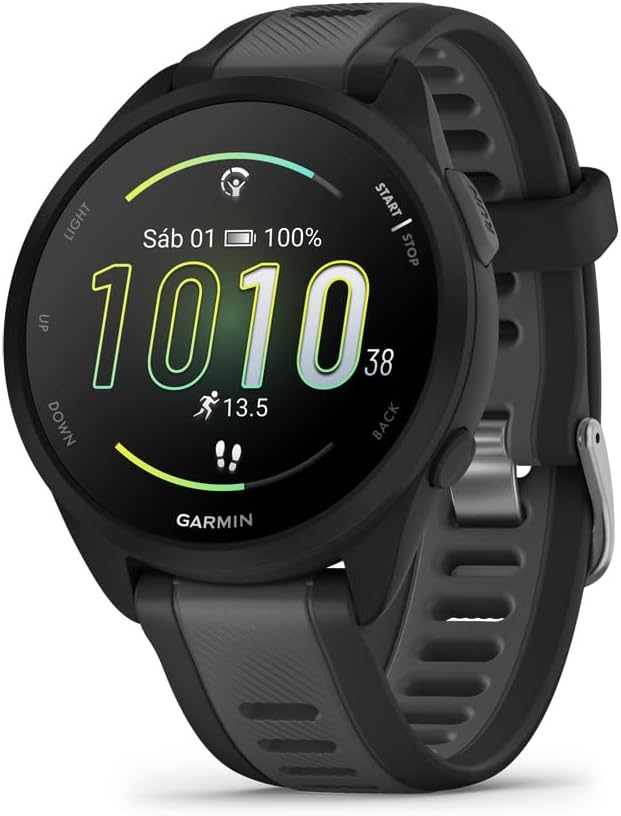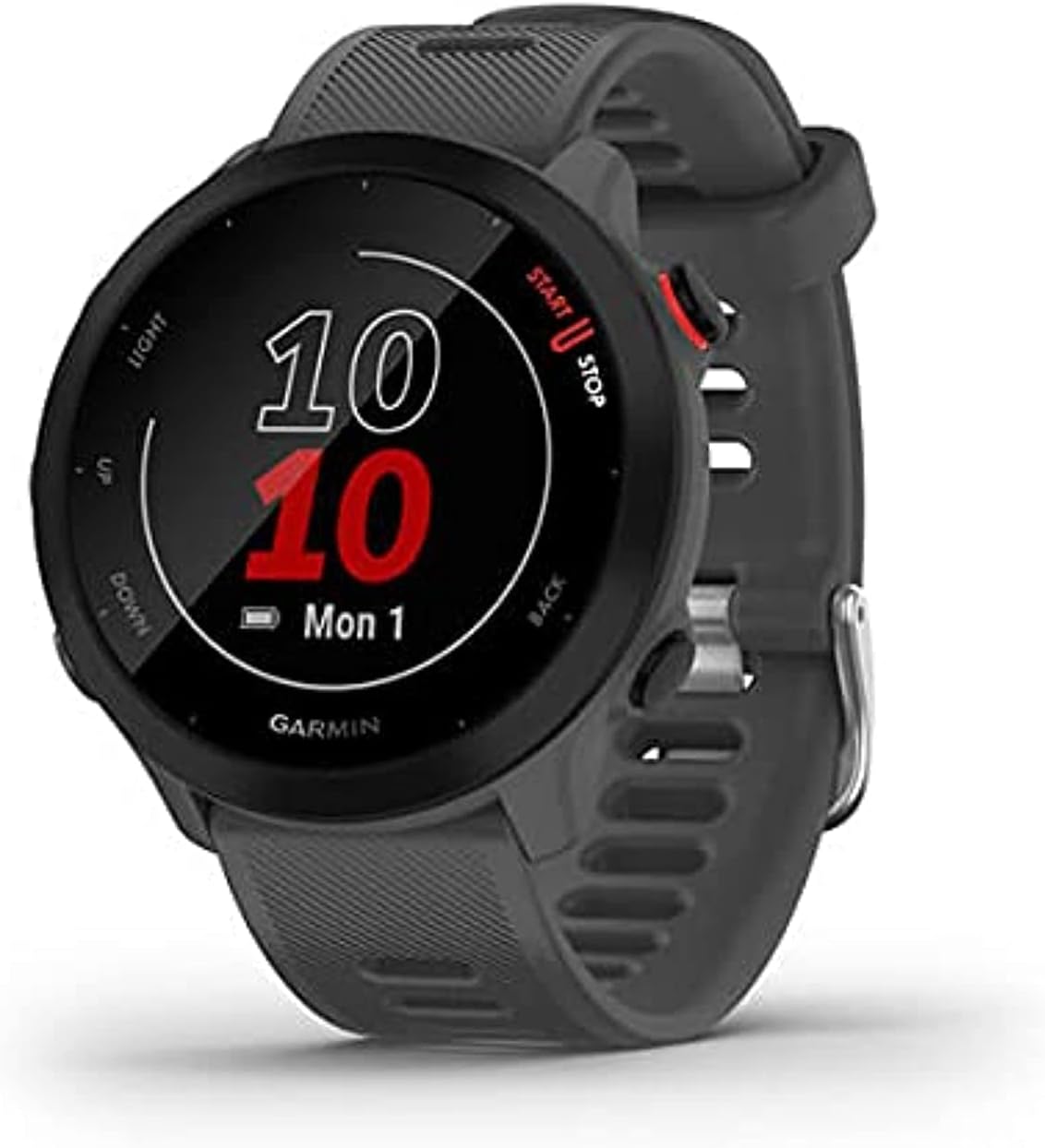Getting into running isn’t about gadgets—but once you’ve got the bug, you realize how much easier it is with a watch that just… gets you. Something simple, light, fast to sync, and not overloaded with fluff. That’s where the Garmin Forerunner 165 and Forerunner 55 enter the conversation.
They’re not trying to be lifestyle statements. They don’t double as wristphones or play TikToks. They’re watches made for people who want to run, train, rest, and repeat—without overcomplicating things. But here’s the twist: one is clearly older, and one feels like it grew up.
We’ve spent time with both. Not just testing features, but running with them, sleeping with them, charging them late at night before a morning tempo. And if you’re trying to figure out which one deserves your first 5K—or your fiftieth—keep reading.
A familiar form, with a screen that actually pops
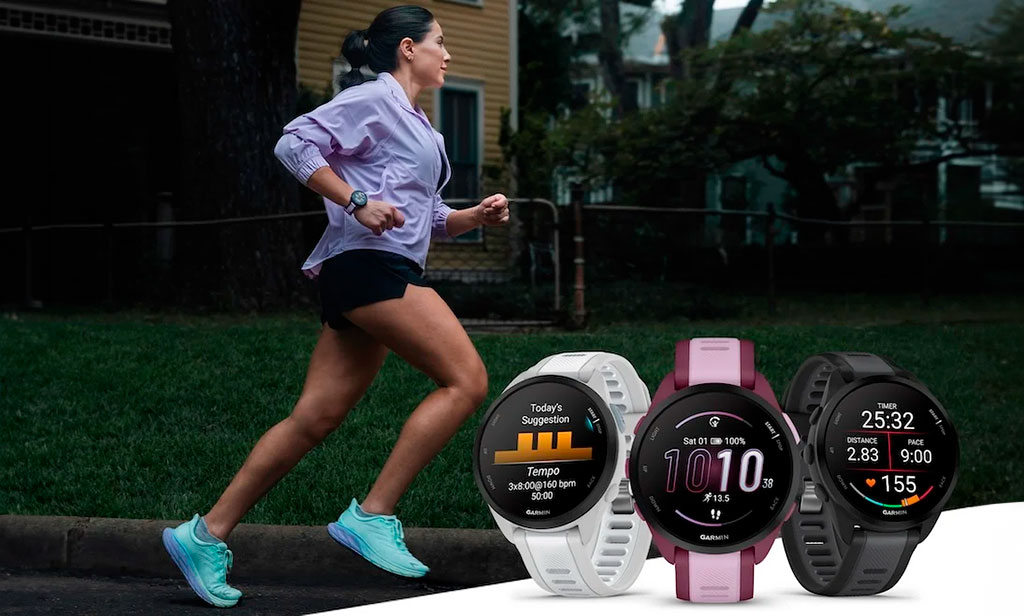
At first glance, you’d struggle to tell them apart. Both watches keep things lean: polymer case, round face, silicone strap, nothing flashy. They’re light on the wrist—the 55 weighs just 37g, and the 165 bumps up to 39g—but it’s not a weight you feel. With cases at 42mm and 43mm, they sit easily on small to medium wrists.
But then you turn the screen on. And that’s when it’s game over for the Forerunner 55.
The Forerunner 165 introduces a 1.2-inch AMOLED display that blows the older MIP (memory-in-pixel) screen out of the water. It’s sharper, more colorful, and far easier to read in low light or indoors. The 55’s display is perfectly functional outside—it thrives in direct sun—but it’s flat and muted. No contrast. No flair.
So sure, both may look plain on the outside, but only one actually feels modern when you’re scrolling through data or checking your splits.
Basic runners’ toolkit—or a smarter one?
We’ll give credit where it’s due: the Forerunner 55 nails the basics. GPS, heart rate, pace, time, distance. It’s got Garmin Coach, PacePro, and even a basic race predictor. You can train with structure, and the watch helps keep you honest.
But the 165 just… does more. It includes everything the 55 has, and builds on it with Training Effect, which tells you whether a session boosted your aerobic or anaerobic fitness. It’s not fluff. It’s a great tool for understanding how you’re improving—not just if you’re training.
The Race Widget is another smart addition, providing countdowns, predicted finishing times, and even race-specific guidance as you get closer to the big day. For newer runners targeting events, it’s a quiet but powerful motivator.
Then there’s Running Dynamics: cadence, stride length, ground contact time. No, you don’t need them. But once you see them, you start to think about your form differently. And maybe that’s the point—the 165 doesn’t just measure your runs. It teaches you to think like a runner.
Health tracking: from checkboxes to actual insight
Neither of these watches is pretending to be a health lab. But they’ve got the essentials: sleep tracking, heart rate, stress, Body Battery—that cool little Garmin metric that tries to guess how much energy you’ve got left in the tank.
Still, the 165 pulls ahead by making those features more useful. Sleep isn’t just tracked—it’s scored, visualized, and broken down into REM, light, deep. It also detects naps automatically, which is shockingly helpful for real-life schedules. The 55? Still waiting for that feature.
Then there’s Pulse Ox tracking, exclusive to the 165. It lets you check blood oxygen levels during sleep or on demand. Not a game-changer for everyone, but for those training at altitude or with certain health conditions, it’s a solid extra tool.
Bottom line: both watches monitor health, but the 165 actually helps you understand what it all means.
Music and smart features: just enough, unless you want more
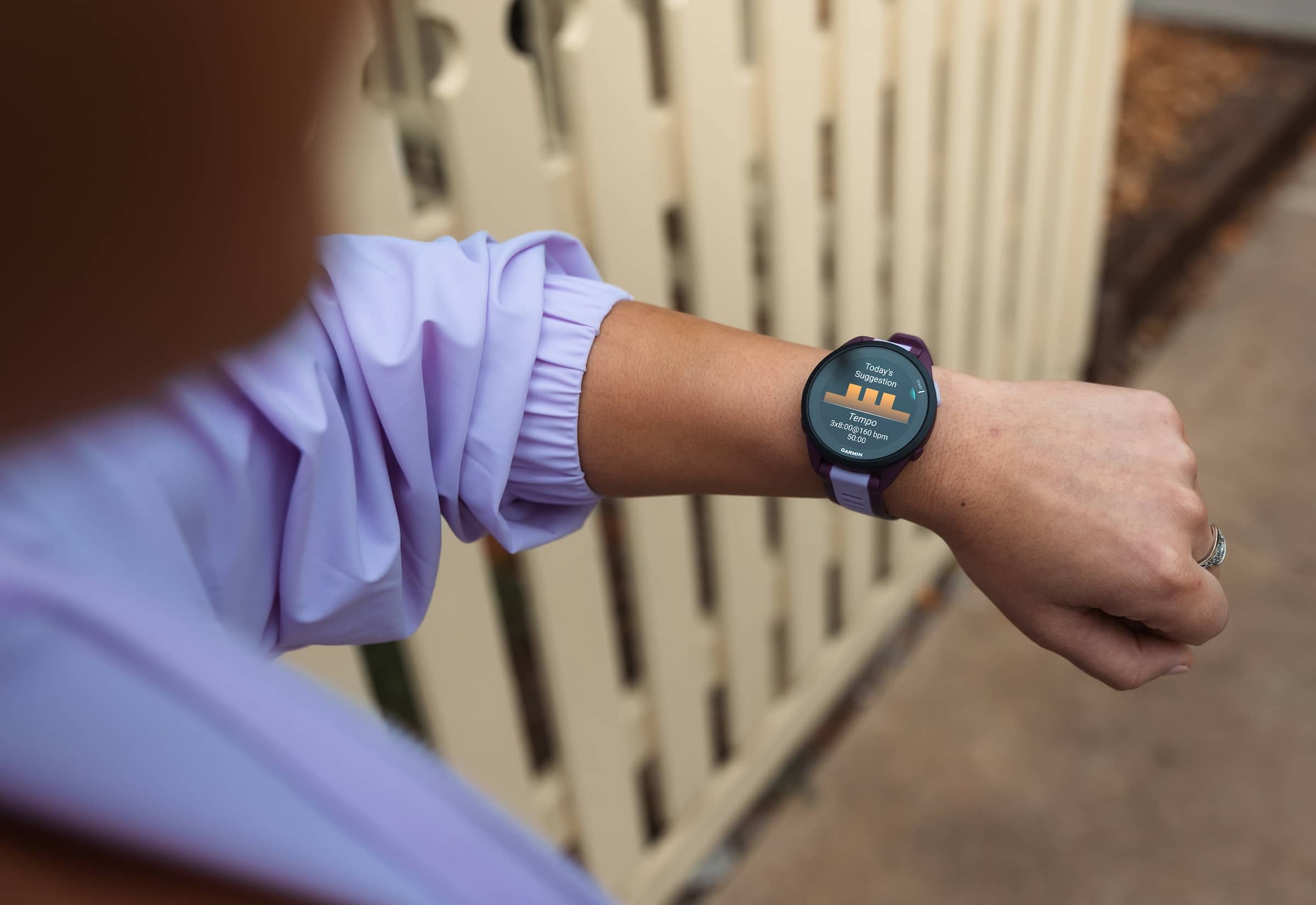
Let’s not pretend these watches are smartwatches in the full sense. You’re not making calls, texting, or paying for coffee with either one. But the basics are there: notifications, calendar alerts, weather updates.
Here’s the small but important difference: the Forerunner 165 has a version that supports music storage. You can sync playlists and run without your phone. If that sounds minor, think about how often you’ve tried to jam your phone into an armband.
The 55 offers only media controls—play, pause, skip— and it needs to be connected to your phone the whole time.
If you run with music, that one feature might be the dealbreaker.
Battery: old school wins this round
Alright, credit where it’s due—the Forerunner 55 lasts longer. Up to 14 days in smartwatch mode, 20 hours with GPS. It’s a beast.
The Forerunner 165 offers up to 11 days normally, and around 19 hours in GPS mode. Not bad at all, and honestly still excellent compared to most watches out there. But yes, that bright AMOLED screen does eat a bit more juice, especially if you turn on always-on mode.
We lived with both, and it’s not a huge deal—but if you hate charging anything more than once a week, the 55 might fit your rhythm better.
Buttons or touchscreen? Surprise—it’s both
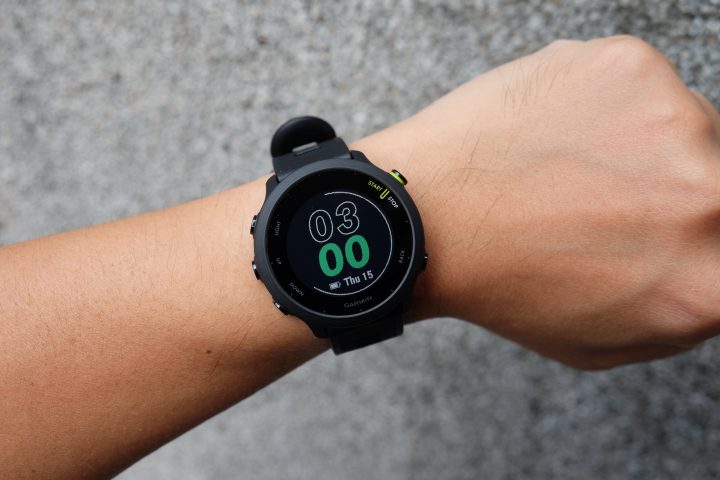
Garmin fans tend to love buttons. And yes, both watches keep the classic five-button layout. But the 165 sneaks in something new: a touchscreen.
And it works. Swiping through menus or toggling widgets is way faster than constant button presses. And if your fingers are sweaty? No problem—you’ve still got the buttons as backup.
The 55 is purely button-driven, and it can feel a little clunky once you’ve experienced the fluidity of touch.
Training features: knowing where you’re going
If you’re just starting out, both watches are awesome. Garmin Coach provides personalized plans, daily workout suggestions keep things fresh, and both watches offer recovery timers to help you avoid overtraining.
But here’s where the 165 starts separating itself.
Training Effect shows the physiological impact of your workouts—are you building endurance? Speed? Strength? You won’t get that kind of breakdown on the 55.
HRV Status is another standout. Measured overnight, it gives insight into stress, recovery, and general readiness. Again—not something you’ll find on the 55.
And then there’s the Race Widget again. When race day looms, it becomes a focused hub—reminding you of the date, providing predictions, and even tailoring training intensity based on how close you are.
This is the kind of guidance that helps you train smarter, not harder.
GPS: reliable on both, not elite
Both the 55 and 165 offer single-band GPS—which is exactly what you’d expect at this tier. Tracking is accurate, signal lock is fast, and most runners won’t notice a thing.
We’ve tested both in parks, suburban streets, and some light trail work. Pace was steady, routes were clean, and any hiccups were minor.
No multi-band wizardry here, but for 99% of runners, it’s perfectly solid.
Built for sweat, not for show
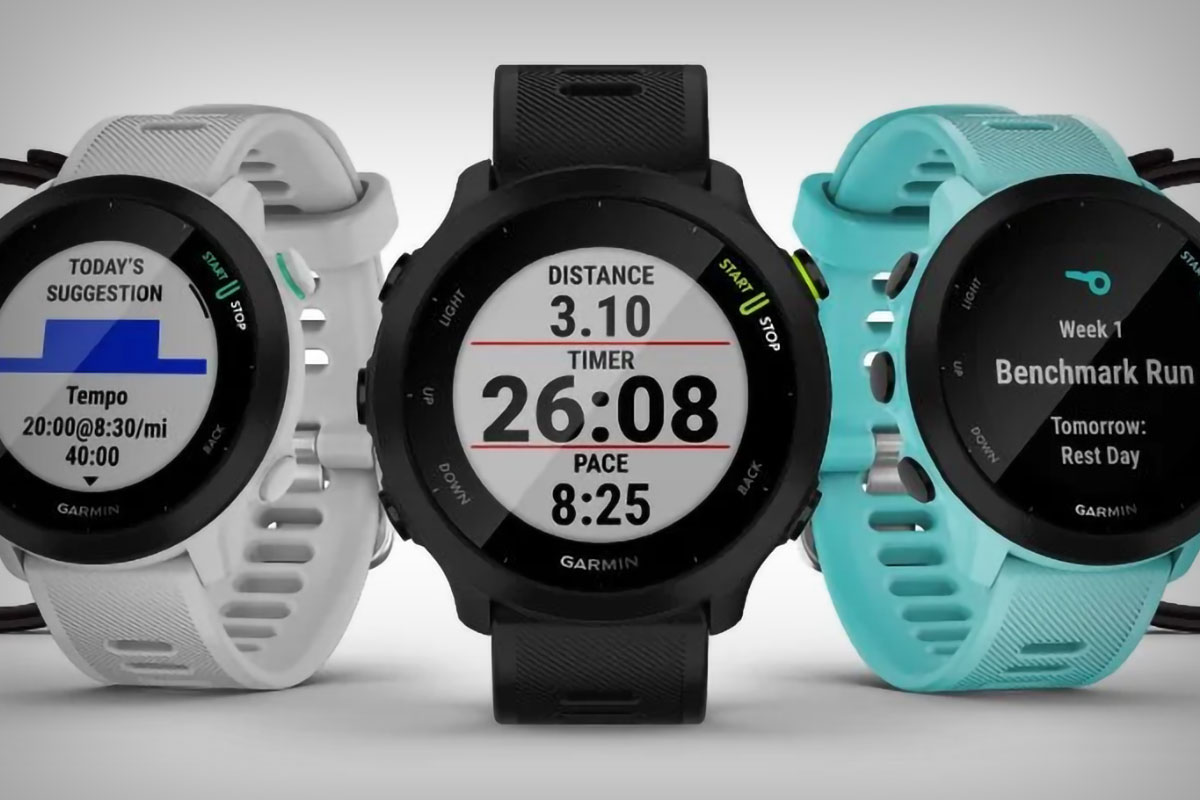
Don’t expect sapphire glass or titanium bezels. Both watches are made from durable plastics, with silicone bands and water resistance for swimming. They’re not fragile, but they’re not luxury pieces either.
You can shower, swim, and sweat all you want—these watches won’t complain.
They’re built to be forgotten during use, and that’s exactly what makes them good.
So which one actually belongs on your wrist?
Here’s the deal. If you’re on a strict budget, or you want the absolute simplest running watch that works, the Forerunner 55 is still a fantastic choice. It’s reliable, accurate, and gets the job done without frills.
But once you use the 165… it’s hard to go back. The screen alone feels like a leap forward. Add in music storage, touchscreen, better sleep and health metrics, and smarter training tools?
The Forerunner 165 doesn’t just improve on the 55—it outgrows it. It’s what the 55 would’ve been if Garmin had waited a couple of years and listened to runners’ feedback.
It’s not perfect. But it’s a clear step up. And that’s what makes the choice feel less like a debate—and more like a natural upgrade.

